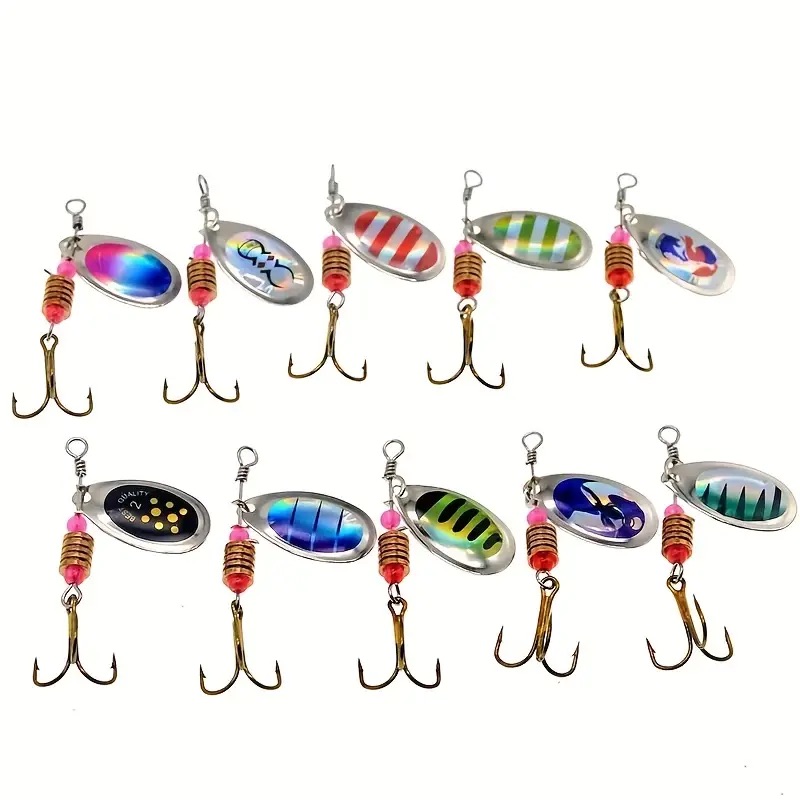Casting spoon lures are a fantastic choice for anglers looking to entice a variety of fish species. With their enticing wobble, flash, and versatility, these lures have earned their place as a go-to option in every angler’s tackle box. However, knowing how to reel in a casting spoon lure properly can make all the difference between a successful catch and a missed opportunity. In this blog post, we’ll explore the essential techniques and tips to help you maximize your chances of success when reeling in a casting spoon lure.
- Choosing the Right Gear:
Before diving into the reeling techniques, it’s crucial to select the appropriate gear for casting spoon lures. A medium to medium-heavy spinning or baitcasting rod and reel combo is generally recommended. Ensure that your equipment matches the weight range specified for the casting spoon you’re using. A balanced setup will allow for accurate casting, control, and optimal hooksets.
- Casting with Precision:
To start your casting sequence, grip the rod firmly and bring it back smoothly in a fluid motion. As you reach the desired position, release the lure with a flick of your wrist while simultaneously releasing the fishing line from the reel. Aim for accuracy and try to cast beyond the desired target area to avoid spooking nearby fish. Practice casting in different conditions to improve your accuracy and distance.
- Retrieval Techniques:
a. Steady Retrieve: One of the simplest and most effective methods is the steady retrieve. After casting, let the casting spoon sink for a moment, allowing it to reach the desired depth. Then, retrieve the lure by turning the reel handle steadily and at a consistent speed. This method imitates a swimming or fleeing baitfish, attracting predatory fish. Experiment with different retrieval speeds to find what works best for the specific fish species you’re targeting.
b. Stop-and-Go: Another effective technique is the stop-and-go retrieve. After casting, allow the spoon to sink, and then retrieve it by reeling in a few cranks of the reel handle. Pause momentarily to let the spoon flutter and fall, imitating an injured or disoriented baitfish. This intermittent action can trigger the predatory instincts of fish and entice strikes. Vary the duration of your pauses to find the rhythm that works best.
c. Jerking and Twitching: For more aggressive fish or when trying to imitate a wounded baitfish, incorporate jerking and twitching actions into your retrieve. After casting and allowing the spoon to sink, impart short, sharp jerks or twitches to the rod tip. This erratic movement can create an irresistible action that attracts fish. Combine this technique with occasional pauses to simulate a dying or struggling prey.
- Adjusting to Conditions:
It’s crucial to adapt your reeling technique to the prevailing conditions. For example, in murky water or low-light conditions, a slower retrieve with exaggerated movements can help fish locate and strike your lure. In clear water or bright sunlight, a faster and more subtle retrieve may be necessary to elicit a response. Pay attention to the water temperature, wind, and the behavior of the fish to make informed adjustments.
- Adding Variation:
To increase your chances of success, don’t be afraid to experiment with the presentation of your casting spoon lure. Try changing the speed, depth, and direction of your retrieve to mimic different types of baitfish behavior. Additionally, consider incorporating pauses, twitches, and subtle rod movements to make your lure stand out and trigger fish to strike.
Reeling in a casting spoon lure successfully requires a combination of technique, observation, and adaptability. By selecting the right gear, casting accurately, and utilizing different retrieval techniques, you can enhance

Comments are closed